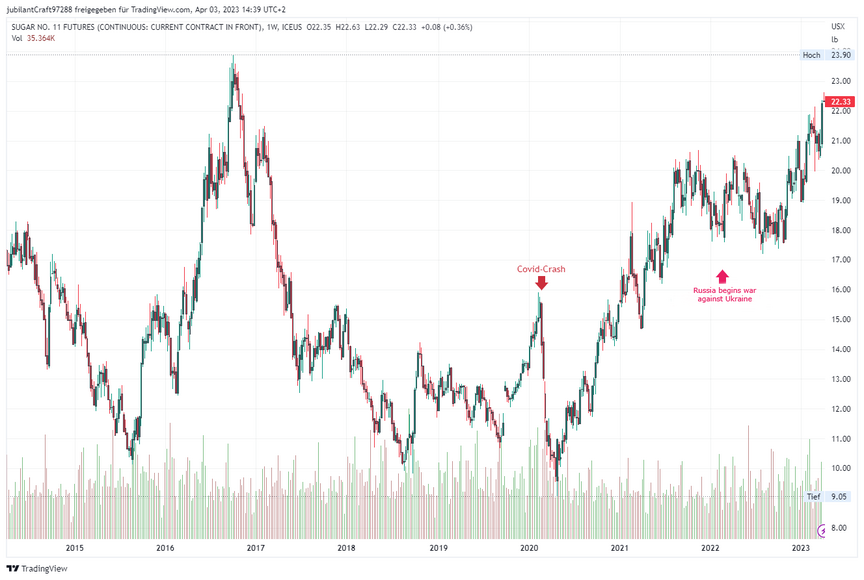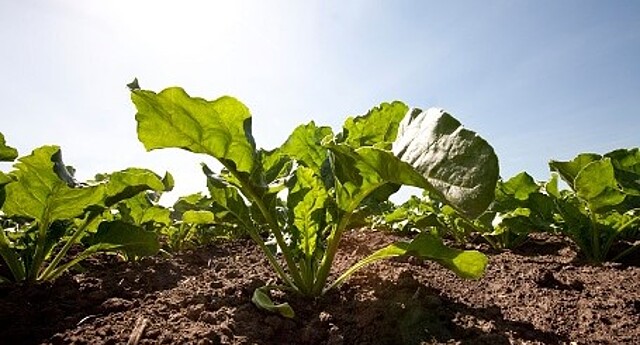
Prices World Sugar Market
Since the end of the sugar market regulation on October 1, 2017, EU sugar beet growers have been significantly more dependent on international sugar prices, which are traded on the stock exchanges in London and New York as well as within the EU. Although some sugar manufacturers have also offered farmers payment models with three-year fixed prices, it is now more worthwhile than ever to look at the international markets.
Sugar price is skyrocketing - What's going on?
April 3, 2023 | Sugar No. 11 prices have literally taken off in recent weeks. Weekly gains of over 5 percent were not uncommon. At the beginning of calendar week 14, closing prices are only just under 6 percent away from the 10-year high at the beginning of October 2016. There are no fundamental reasons for this trend to end in the medium term. What is the driving force behind the rapid increases?
Sugar is becoming scarce! Low fertilizer use in Thailand, excessive rainfall in India and drought in Europe led to several downward revisions in supply estimates.
In Thailand, one of the world's leading sugar producers, the vast majority of sugar mills have already stopped production due to a lack of raw material.
Exports from India will nearly halve to 6 million tons this year, which ends in September, from about 11 million tons last year, and could fall to as low as 4 million tons next season, according to a Bloomberg survey of traders and analysts. In addition, more and more sugarcane is being used for biofuel, rather than sugar production. This season, the plan is to process 5 million tons of sugar into ethanol, up from 3.6 million tons last year. Prime Minister Narendra Modi is pursuing an ambitious bioethanol program to reduce air pollution and oil imports, to keep the value of the high local production potential in the country, and to increase farmers' incomes.
Brazil is actually expecting a record sugarcane harvest. Nevertheless, harvesting operations have been delayed by heavy rainfall. In addition, limited port capacity could restrict supplies to the global market, as a bumper crop of soybeans is equally vying for limited shipping volumes.
As the Reuters news service reported today, Saudi Arabia and other member countries of the Opec+ oil alliance are planning a surprise voluntary cut in oil production. From May, production is thus to fall by a total of 1.15 million barrels per day. Saudi Arabia alone is planning a production cut of 500,000 barrels per day, according to its own information. Saudi Arabia's Energy Ministry said Sunday that the measures were aimed at stabilizing the oil market. Russia plans to continue its production cut until the end of 2023. According to one analyst, the oil production cut could lead to oil prices increasing by ten dollars per barrel. This news is fueling the trend toward increasing ethanol production from sugar-supplying feedstocks.
A steady increase in global consumption, declining stocks and negative corrections in crop estimates are the triggers for visibly rising quotations.





